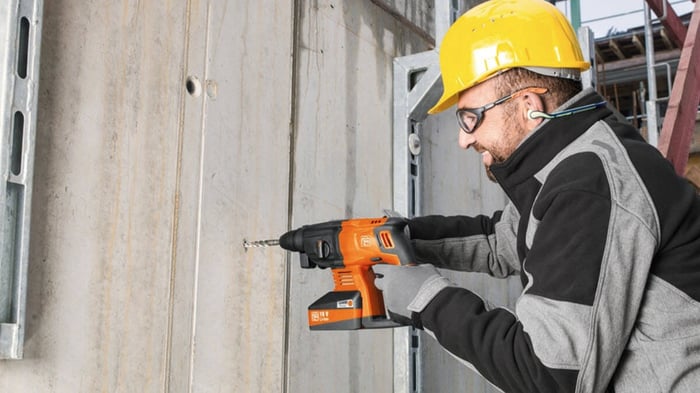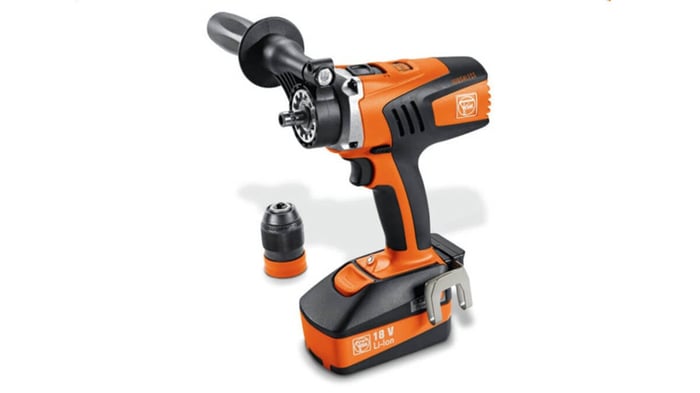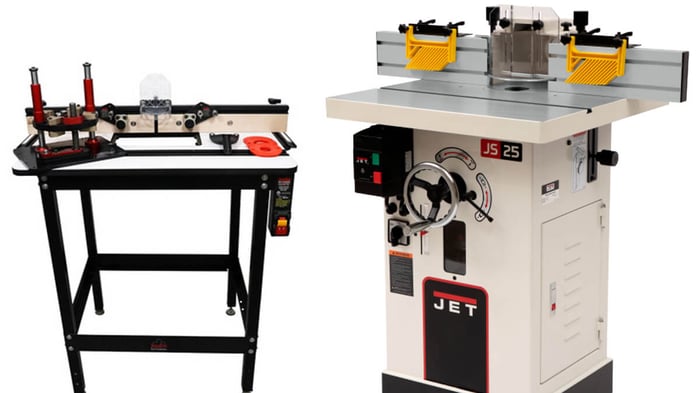
How to Drill Into Concrete
Need to drill into concrete?
Drilling into concrete can be challenging, but with the right tools and methods, it can be done efficiently and effectively.
We will discuss the necessary tools for drilling into concrete, including different types of drills and their functions, and other critical tools. We will also cover selecting the correct drill bit and provide a step-by-step guide for drilling into concrete, including preparation and safety precautions.
Finally, we will offer tips for successful concrete drilling and highlight common mistakes to avoid.
Why is it Challenging?
Drilling into concrete is difficult due to its high density, requiring specialized drilling methods and proper safety equipment to ensure precision and prevent damage.
Concrete's hardness can quickly wear down conventional drill bits, reducing efficiency and risking tool damage. Using masonry bits specifically designed for concrete drilling is essential. Safety gear like goggles, gloves, and ear protection is crucial to protect against debris, hand injuries, and noise.
Following these guidelines improves drilling accuracy and emphasizes the importance of safety.

Festool 577601 Rotary Hammer has best power-to-weight ratio in its class, with 1.80 J single impact energy at only 4.19 lbs. Requires 18 V batteries, sold separately.
Tools Needed for Drilling into Concrete
Essential tools for concrete drilling include a hammer drill, rotary hammer, or impact drill, which are crucial for efficiently breaking through the dense material.
Types of Drills and Their Uses
Various types of drills, including hammer drills, rotary hammers, impact drills, and percussion drills, each serve specific purposes in concrete drilling.
Hammer drills offer a combination of drilling and hammering actions, making them suitable for drilling into tougher materials like stone, concrete, and masonry. They are ideal for tasks involving both drilling and chiseling.
Rotary hammers are designed for heavy-duty drilling in concrete, brick, and stone, delivering more power and impact force for larger projects.
Impact drills, or impact drivers, excel at driving screws and fasteners due to their high torque output and hammering function.
Percussion drills are used for lighter drilling duties in materials like wood and metal, offering a balance between power and precision.

Fein 71400161090 Rotary Hammer has single impact energy of 1.5 ft.lbs.(2.034 J.), but weighs in at 5.07 lbs without battery, or 6.61 lbs. with battery. Two 18 V batteries & rapid charger are included.
Other Essential Tools
Concrete drilling requires more than just a drill. Essential tools include masonry bits, diamond core bits, masonry anchors, and proper safety gear.
Masonry bits are crafted to withstand concrete's toughness, enabling accurate drilling. Diamond core bits are better for creating larger diameter holes in reinforced concrete.
Masonry anchors provide stability and support for fixtures or structures. Safety gear like safety glasses, gloves, and ear protection is crucial to protect against debris and noise.
Choosing the Right Drill Bit
Selecting the appropriate drill bit, whether a masonry bit, diamond core bit, or carbide tipped bit, is crucial for effectively penetrating concrete and achieving accurate outcomes.
Factors to Consider
Consider factors like drill bit size, drilling depth, drill speed, and drilling accuracy when selecting a drill bit for concrete.
Drill bit size determines hole diameter. For deeper drilling, ensure the bit is long enough without straining. Maintain appropriate drill speed to enhance efficiency and prevent overheating. For intricate projects, use drill bits with precision tips.
Refer to project specifications and test various drill bits on a small sample before starting the full drilling process.

Step-by-Step Guide to Drilling into Concrete
Our detailed guide provides essential advice, methods, and safety precautions for a smooth and effective drilling procedure.
Preparation and Safety Measures
Before starting, wear appropriate safety gear and understand the drilling techniques.
Inspect the drill to ensure it is in optimal condition. Mark the drilling area for accuracy. Secure the concrete piece with clamps or a vice to prevent shifting. Start drilling at a slow speed to establish a pilot hole, then increase the speed. Regularly clear away dust and debris to maintain visibility and prevent overheating.
Techniques for Drilling into Concrete
Effective techniques include managing drill speed, controlling vibration, and implementing dust control measures for precise and clean results.
Adjust drill speed based on the type of concrete. Use slower speeds for harder materials to prevent overheating and ensure a cleaner cut. Anti-vibration technology can reduce operator fatigue and improve accuracy. Use a vacuum attachment to extract dust particles, reducing airborne contaminants and promoting a healthier workspace.
Tips for Successful Concrete Drilling
Follow these expert tips to ensure successful concrete drilling. Focus on accuracy, proper maintenance of your drill, and optimizing your drilling approach.
Common Mistakes to Avoid
Avoid common mistakes like improper drilling techniques and neglecting safety measures to ensure drilling accuracy and safety.
Using worn-out or dull drill bits can lead to inefficiency and hazards. Properly maintain your drilling equipment by regularly sharpening drill bits and ensuring they are suitable for the specific type of concrete. Secure the work area and wear appropriate safety gear to prevent accidents. Adhere to safety precautions and stay attentive throughout the drilling process to improve precision and productivity while minimizing risks.
Frequently Asked Questions
Can I drill into concrete without a hammer drill?
Drilling into concrete with a regular drill is not recommended. Regular drills lack the power and specific functionality needed to handle the hardness of concrete. Here are the main reasons:
- Power and Impact: Regular drills do not have the necessary power or impact mechanisms to effectively penetrate concrete. A hammer drill or rotary hammer is designed with a hammering action that helps break up the concrete as it drills, which a regular drill cannot provide.
- Durability of Drill Bits: Concrete requires specialized masonry bits that can withstand its hardness. Using a regular drill with standard bits can quickly wear them down or even damage them.
- Efficiency: Without the hammering action, drilling into concrete with a regular drill will be slow and inefficient. The drill may overheat, and the bit can get stuck or break.
- Safety: Attempting to drill into concrete with a regular drill can increase the risk of accidents or injury due to the strain on the tool and operator.
For best results, use a hammer drill or rotary hammer with appropriate masonry bits when drilling into concrete.
What do I do if my bit gets stuck?
If your drill bit gets stuck in the concrete, it can be a frustrating situation, but there are steps you can take to safely and effectively free it. Here's what you should do:
- Stop Drilling Immediately
Turn off the drill and disconnect it from the power source to prevent any accidental start-up. - Assess the Situation
Inspect the bit and the hole to understand why it got stuck. Common reasons include hitting a rebar, the bit overheating and expanding, or the bit encountering a particularly hard aggregate. - Reverse the Drill
Set the drill to reverse mode and try to gently back the bit out. Apply steady pressure without forcing it. This may help dislodge the bit. - Wiggle the Drill
Gently wiggle the drill from side to side while applying reverse pressure. This can help free the bit if it's slightly jammed due to debris or tightness in the hole. - Lubricate the Bit
If the bit is still stuck, apply a small amount of water or a lubricant like WD-40 into the hole. This can help reduce friction and make it easier to remove the bit. - Use Pliers or a Wrench
If the bit is still not coming out, use a pair of pliers or a wrench to grip the exposed part of the bit. Gently twist and pull to try and free it. Be careful not to damage the bit or the drill. - Tap Around the Hole
Use a hammer and a chisel to gently tap around the edge of the hole. This can help loosen any debris or concrete that might be binding the bit. - Re-drill Around the Bit
If the bit is severely stuck and none of the above methods work, you can use another drill with a slightly larger bit to carefully drill around the stuck bit. This can help to free it, but be cautious to avoid breaking the bit or damaging the hole. - Seek Professional Help
If the bit remains stuck and you can't remove it, consider seeking help from a professional. They might have specialized tools or techniques to safely remove the bit without causing damage.
Preventive Measures:
To avoid getting your drill bit stuck in the future, consider these tips:
- Use the Right Bit: Ensure you're using the correct type of bit for the material and task.
- Proper Technique: Apply steady pressure and let the drill do the work. Avoid forcing the bit.
- Lubrication: Regularly lubricate the bit when drilling deep or tough materials.
- Cooling: Take breaks to allow the bit to cool down and avoid overheating.
- Drill Speed: Use the appropriate drill speed for the material.
By following these steps and preventive measures, you can effectively handle and avoid situations where your drill bit gets stuck in concrete.






